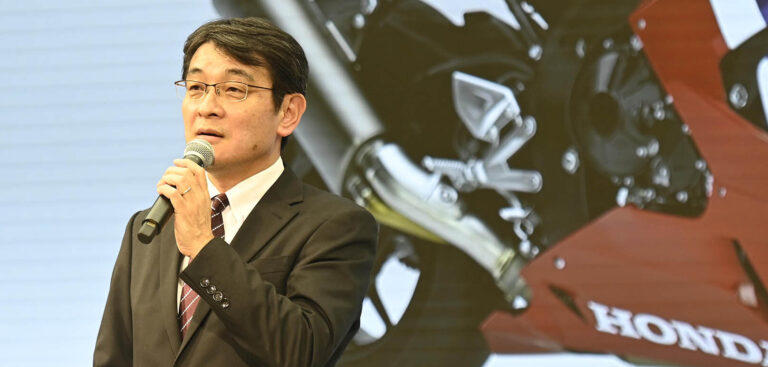Honda has announced that it has signed a letter of intent, along with KTM, Piaggio and Yamaha, to create a swappable batteries consortium for motorcycles and light electric vehicles.
The consortium’s main aim will be to standardize the technical specifications of a swappable battery system set for integration into L-category vehicles, which encompasses mopeds, motorcycles, tricycles and quadricycles. It will then work in collaboration with stakeholders and national and international bodies to create a set of technical standards surrounding the proposed battery.
As the transition to electromobility continues, the companies believe that a standardized swappable battery system will create growth within the light electric vehicle sector, and improve the lifecycle management of batteries being used for transport. The group is looking to extend vehicle range, reduce battery charging times and make vehicle and infrastructure costs lower, with the main aim of reducing customer concerns surrounding the use of electric vehicles for mobility.
The collective aims to start activities in May 2021, with all four members encouraging prospective stakeholders to join the group and improve the consortium by sharing expertise.
Noriaki Abe, managing officer of motorcycle operations at Honda, commented, “The worldwide electrification effort to reduce CO2 on a global scale is accelerating, especially in Europe. For the widespread adoption of electric motorcycles, problems such as travel distance and charging times need to be addressed, and swappable batteries are a promising solution. Considering customer convenience, standardization of swappable batteries and wide adoption of battery systems is vital, which is why the four member manufacturers agreed to form the consortium.
“Honda views improving the customers’ usage environment as an area to explore cooperation with other manufacturers, while bringing better products and services to customers through competition. Honda will work hard on both fronts to be the ‘chosen’ manufacturer for customer mobility.”


